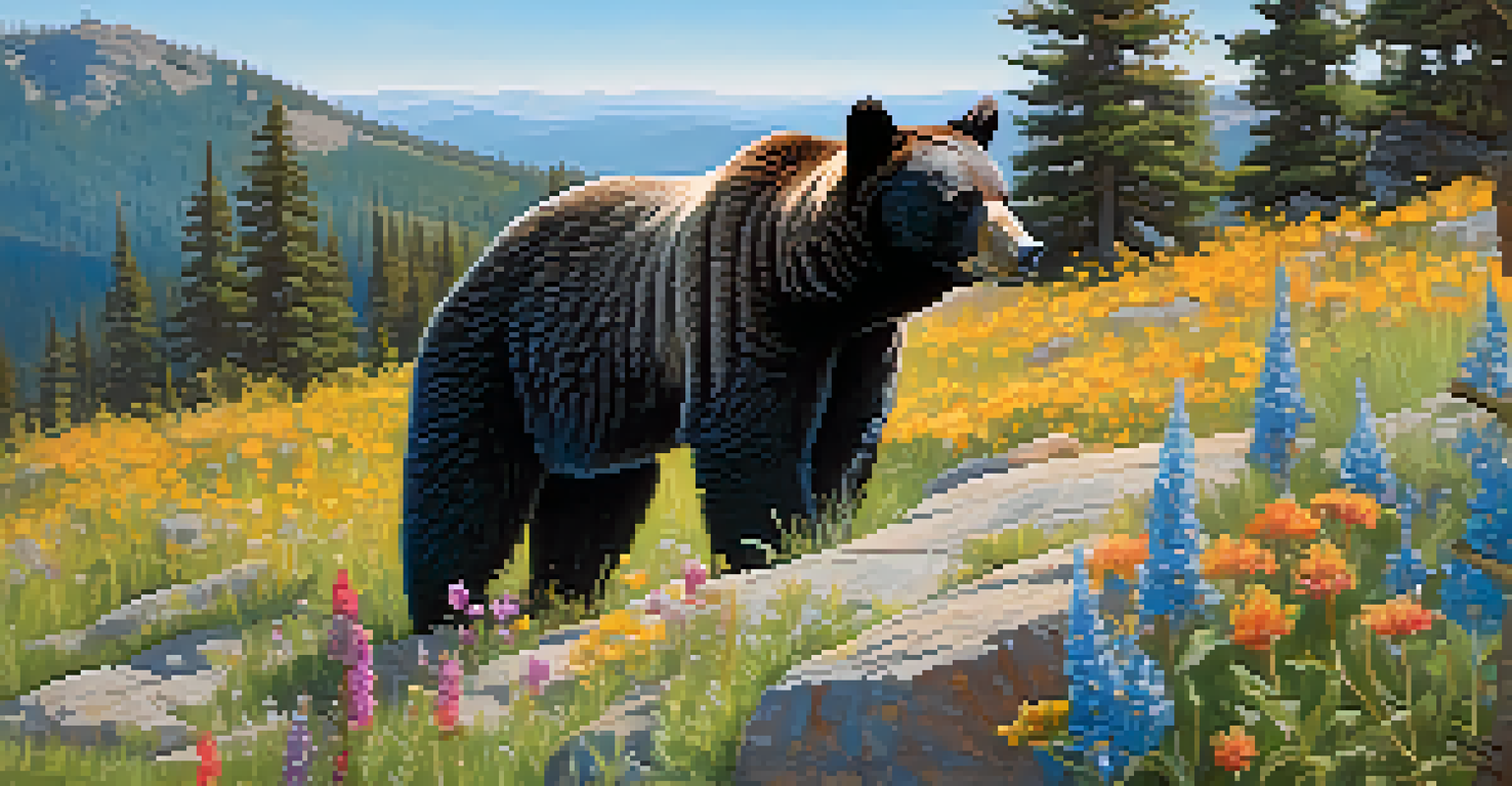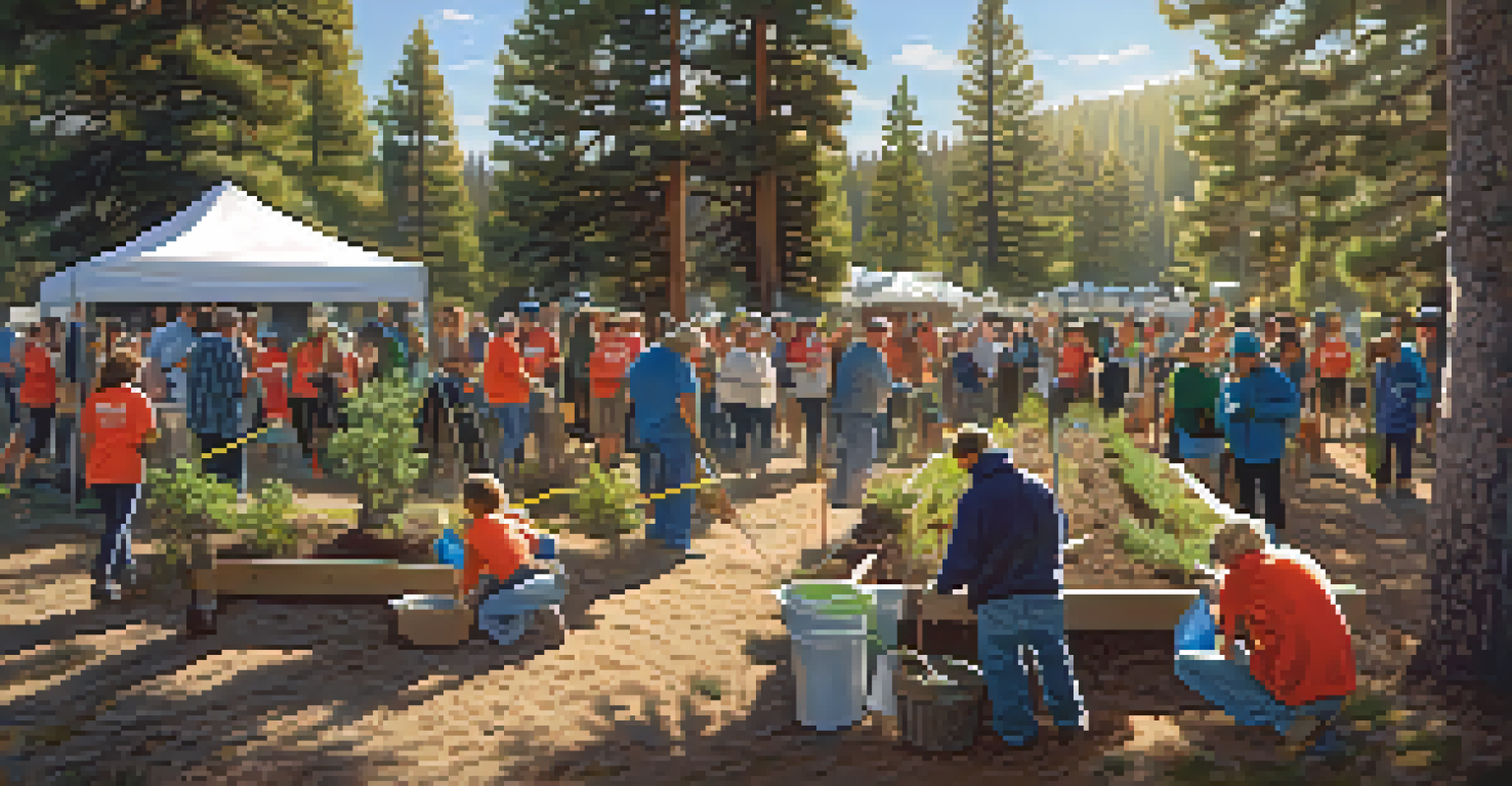The Importance of Conservation for Big Bear's Wildlife

Understanding the Wildlife of Big Bear Valley
Big Bear Valley is home to a diverse array of wildlife, including black bears, deer, and numerous bird species. Each of these animals plays a vital role in the ecosystem, from maintaining vegetation to controlling insect populations. When we understand the unique characteristics of these species, we can better appreciate their contributions to the environment.
In every walk with nature one receives far more than he seeks.
The region’s rich biodiversity not only enhances the beauty of Big Bear but also supports tourism and local economies. Wildlife enthusiasts flock to the area to observe these magnificent creatures in their natural habitats. This influx of visitors helps raise awareness about the need for conservation efforts in the valley.
However, with increasing human activity and climate change, these animals face significant threats. Habitat loss, pollution, and poaching are just a few challenges they encounter. By prioritizing conservation, we can ensure that future generations will also have the opportunity to experience Big Bear's rich wildlife.
The Role of Conservation in Ecosystem Balance
Conservation is essential for maintaining the delicate balance of ecosystems. When a species is removed or declines in number, it can trigger a chain reaction affecting other species and the environment. For example, if the population of predators decreases, herbivore populations may surge, leading to overgrazing and habitat degradation.

In Big Bear, the preservation of wildlife habitats ensures that diverse plants and animals can thrive together. This interconnectedness is crucial for pollination, seed dispersal, and nutrient cycling, all of which contribute to a healthy ecosystem. When we conserve wildlife, we are, in essence, safeguarding the environmental health of the entire region.
Biodiversity Supports Ecosystems
Big Bear Valley's rich wildlife diversity enhances the ecosystem's health and supports local tourism.
Moreover, healthy ecosystems provide numerous benefits to humans, such as clean air and water, recreational opportunities, and even disease regulation. By investing in conservation efforts, we are investing in our own well-being and that of the planet.
Community Involvement in Conservation Efforts
Community engagement plays a pivotal role in wildlife conservation. Local residents can be powerful advocates for protecting their natural surroundings, from volunteering for cleanup days to participating in wildlife monitoring programs. When individuals take ownership of their environment, they foster a sense of stewardship that benefits the entire community.
What we are doing to the forests of the world is but a mirror reflection of what we are doing to ourselves and to one another.
Educational programs are also vital in raising awareness about conservation issues. Schools and local organizations can host workshops and events to teach children and adults alike about the importance of protecting wildlife. This knowledge empowers people to make informed decisions that positively impact their local ecosystems.
Furthermore, community-led initiatives can lead to sustainable practices that benefit both wildlife and residents. For instance, creating wildlife corridors can help animals safely navigate urban areas, while also enhancing the recreational spaces available to the community. Together, we can cultivate a culture of conservation that resonates throughout Big Bear.
The Impact of Climate Change on Wildlife
Climate change poses a significant threat to wildlife habitats in Big Bear Valley. Rising temperatures, altered precipitation patterns, and extreme weather events can disrupt the delicate balance of ecosystems. Species that are unable to adapt quickly enough may face population declines or even extinction.
For example, changes in temperature can affect the breeding cycles of certain animals, leading to mismatches in food availability and reproduction. Additionally, some plant species may struggle to survive in altered climates, impacting the animals that rely on them for food and shelter. This ripple effect illustrates the urgency of addressing climate change through conservation efforts.
Community Engagement is Key
Active community involvement in conservation efforts fosters a sense of stewardship and leads to sustainable practices.
By implementing strategies to mitigate climate change, such as restoring habitats and promoting biodiversity, we can help wildlife adapt to new environmental conditions. Protecting these ecosystems fosters resilience, ensuring that species can survive and thrive despite the challenges posed by a changing climate.
Protecting Endangered Species in Big Bear
Endangered species in Big Bear Valley require special attention to ensure their survival. These species, often vulnerable due to habitat loss, poaching, or other human impacts, are crucial indicators of environmental health. By focusing on their protection, we are also safeguarding the broader ecosystem they inhabit.
Efforts to protect endangered species can include habitat restoration, legal protections, and breeding programs. Local organizations often work tirelessly to monitor these species and implement conservation strategies tailored to their needs. Community involvement is essential in these efforts, as public support can lead to more effective policy changes.
Additionally, raising awareness about the plight of endangered species can inspire action. When people understand the importance of protecting these animals, they are more likely to participate in conservation initiatives. Every small effort counts, and collectively, we can make a significant impact on the future of Big Bear's wildlife.
The Role of Technology in Conservation
Technology has become an invaluable tool in wildlife conservation efforts. From GPS tracking devices to camera traps, innovative tools help researchers monitor animal populations and movements. This data is essential for understanding species behavior and implementing effective conservation strategies.
Drones, for instance, are now being used to survey habitats and track wildlife without disturbing their natural behavior. This technology enables conservationists to gather important information about ecosystems and identify areas in need of protection. The ability to collect data quickly and efficiently enhances our understanding of wildlife conservation challenges.
Climate Change Threatens Wildlife
Rising temperatures and altered weather patterns pose significant risks to the habitats and survival of species in Big Bear.
Moreover, technology can facilitate community engagement through platforms that educate and inspire action. Social media campaigns and mobile apps can help spread awareness about conservation initiatives, encouraging people to get involved. By harnessing technology, we can create a more informed and proactive community dedicated to preserving Big Bear's wildlife.
The Future of Wildlife Conservation in Big Bear
Looking ahead, the future of wildlife conservation in Big Bear Valley hinges on collaborative efforts among communities, organizations, and government agencies. By working together, we can develop comprehensive strategies that address both immediate challenges and long-term goals. This united approach ensures that conservation efforts are sustainable and effective.
Investment in education and awareness is crucial for fostering a culture of conservation. By teaching future generations about the importance of wildlife and ecosystems, we empower them to take action and advocate for their environment. This legacy of stewardship is vital for the ongoing protection of Big Bear's wildlife.

Ultimately, the fate of Big Bear's wildlife is in our hands. Through dedicated efforts and community involvement, we can create a thriving environment where both wildlife and people coexist harmoniously. The call to action is clear: let’s commit to preserving the natural beauty and biodiversity of Big Bear Valley for generations to come.